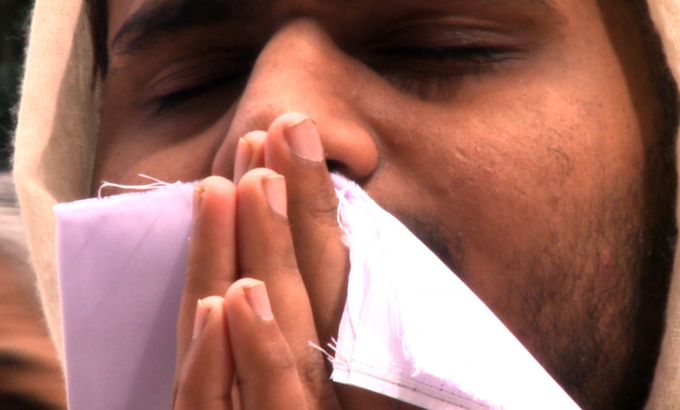
Indian Hospital: Episode 6
We follow a young girl who finally receives a new kidney and a trainee surgeon as he assists in a difficult operation.
This unique observational documentary series shines a light on Indian society as it is rarely seen. In six one-hour programmes it illuminates the complexities and dilemmas of modern India through the extraordinarily varied lives of patients and medical staff working at the Narayana Hrudayalaya Hospital Complex in Bangalore.
A series by Paul Roy
Keep reading
list of 4 itemsWoman, seeking loan, wheels corpse into Brazilian bank
UK set to ban tobacco sales for a ‘smoke-free’ generation. Will it work?
Poland lawmakers take steps towards liberalising abortion laws
In the Narayana Hrudayalaya hospital’s lecture room, more than 100 anaesthetists attend a conference in which they will get their first opportunity to dissect a heart. For this session, it is a pig’s heart rather than a human heart – but the two are almost identical and the lesson will help the students better understand the anaesthesia process and its effects during surgery.
This is all part of Dr Devi Shetty’s efforts to fast track young students, like Krishna Kishore, to become fully qualified heart transplant specialists in just six years. Elsewhere they would have to wait at least another five years before specialising.
“The whole concept is making them technically skilled surgeons at a very, very young age,” explains Shetty. “Why should somebody [have to wait] to be 50 years [of age] before he can do this complex operation, why can’t he do it when he is still in his thirties?”
Trainee surgeon Kishore is given the opportunity to assist Dr Sri Krishna in an operation to remove a growth from the lung of a 33-year-old farm labourer. Shrishail is the sole wage earner for his family of five, but with a history of tuberculosis and a diseased lung, his prognosis is bad. Without this operation, he may well die within the next six months.
As Krishna makes the first incision, he tests his student’s knowledge and imparts pearls of wisdom gathered over years as a surgeon. But three hours into the procedure, things start to look far more serious than anybody anticipated. The lung is so badly diseased that the decision is made to remove it.
When the seven-hour operation is finally over, Kishore is left to complete the final stitches and contemplate the day’s lessons.
Fortunately for Shrishail, despite the problems encountered during the surgery, he is able to recover well.
For the course of his training, Kishore will work long shifts to build up his surgical skills, study at night and attend lessons during the day. This accelerated cardiac programme will leave little time for a social life and mean precious little sleep.
Meanwhile, after spending six weeks at Narayana Hrudayalaya, the Jain monks are taken back to their temple in Bangalore, where their rehabilitation continues. Only time will tell whether the monks will get back on their feet or if their days on the road are over. Either way, their faith will be tested during the difficult months, and possibly even years, ahead.
Fifty-seven-year-old American Brian Navalinsky has come to Narayana for a new heart valve – an operation that will be performed by Shetty. After his four-hour surgery, he is taken off the bypass machine as his heart beats healthily again. His friend who accompanied him to India for the surgery, Tiberius Almasi, is finally allowed to see him as he recovers in the intensive care ward.
For Navya and her family, who are still awaiting the final permissions for the kidney donation from her grandmother, the Hindu celebration of Diwali presents a rare chance to relax. But after attending the ceremonial blessing of machines and vehicles at her uncle’s construction site, Navya’s celebrations are cut short as she returns to the hospital for her dialysis treatment.
But, with the myriad of government permissions secured, four months after Navya’s grandmother offered to donate her kidney, the wait is over.
In India, an estimated 100,000 people need a kidney transplant each year. But just 3,500 are performed. Navya is one of the very fortunate few.